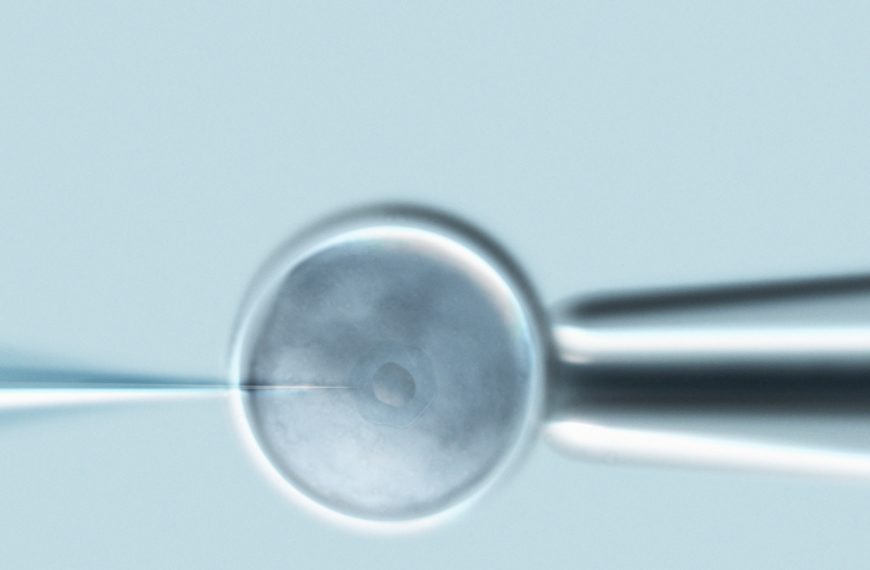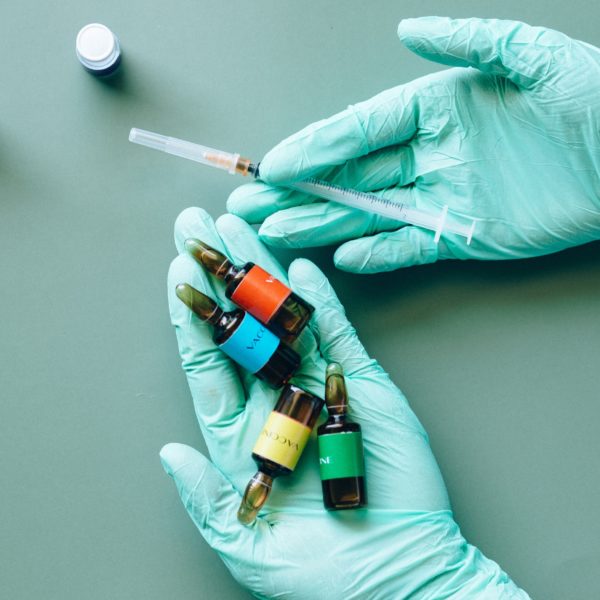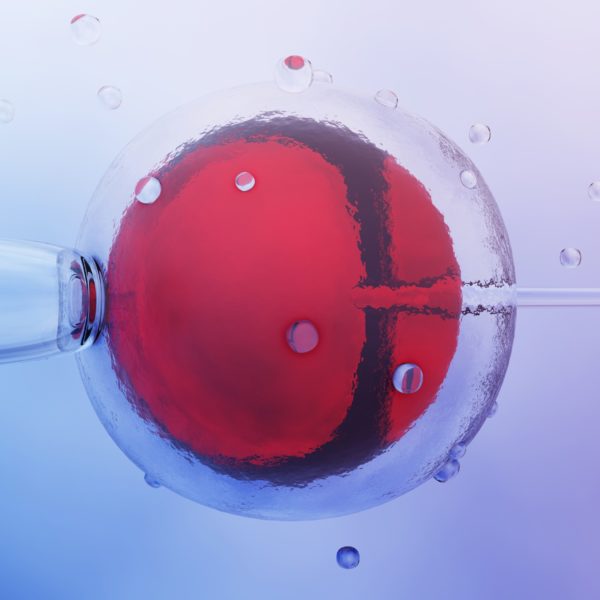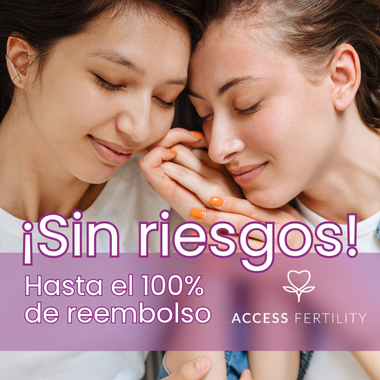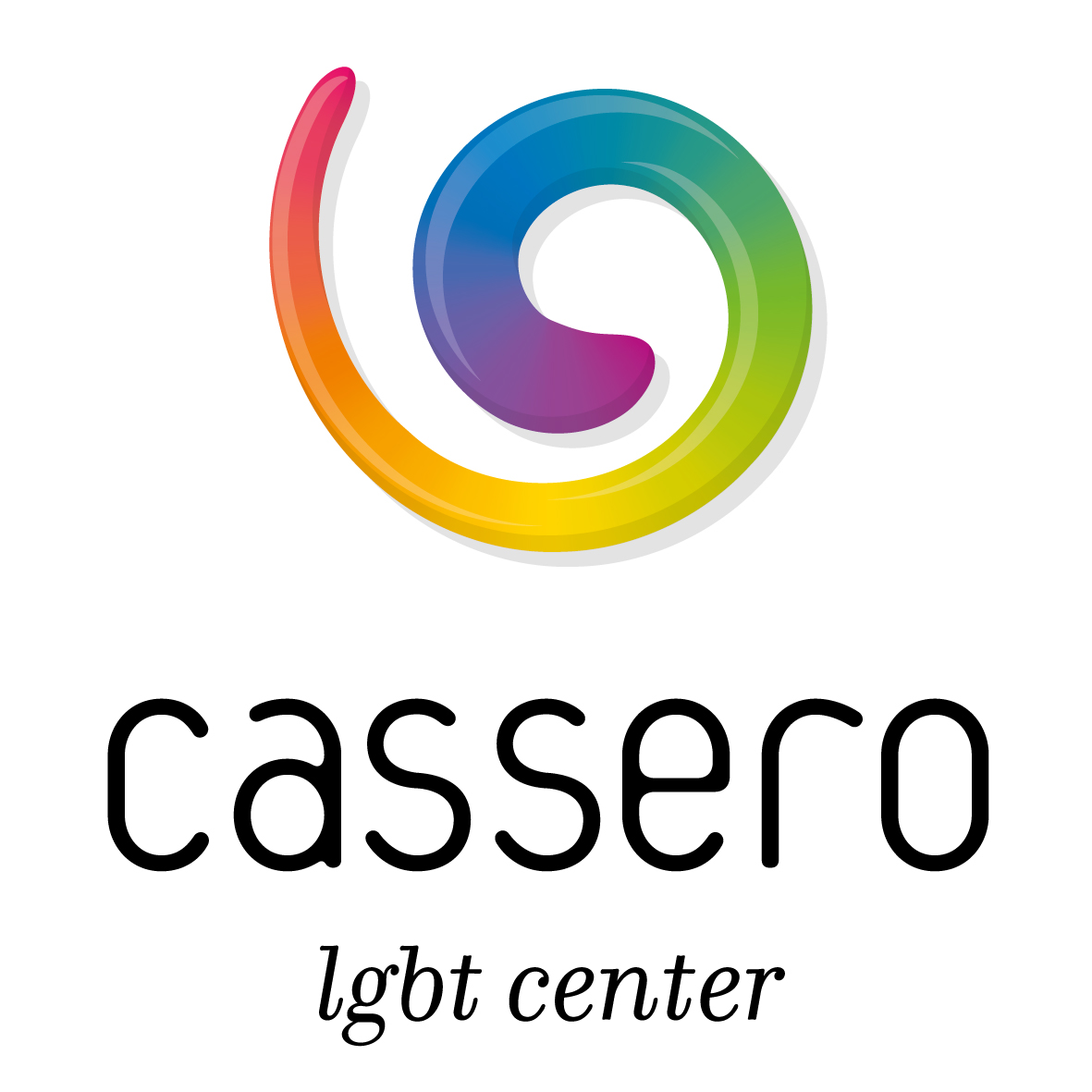Artificial insemination (AI) is an inexpensive and minimally invasive assisted reproduction technique that involves introducing sperm directly into a woman’s uterus to facilitate fertilisation. This procedure aims to increase the chances of pregnancy in cases of reproductive difficulties.
Table of contents
1. What is artificial insemination?
Artificial insemination (AI) is a medical treatment in which sperm is placed directly into a woman’s uterus during her ovulation period in order to facilitate fertilisation of the egg. To perform this procedure, a thin cannula is inserted through the vagina, guided by ultrasound, to ensure that the sperm reaches the right place.
The procedure is performed to increase the chances of pregnancy, especially when the semen has difficulty reaching the egg naturally.
1.1 How does AI differ from natural pregnancy?
The main difference is that the sperm is deposited directly into the uterus, and fertilisation, which occurs in the fallopian tubes, takes place in a similar way to the natural process.
In addition, AI involves selecting the most viable sperm and monitoring ovulation to improve the chances of success.
2. AI treatment step by step
The artificial insemination process consists of several steps to ensure that the insemination is as effective as possible:
- Follicle stimulation: Hormones are administered to stimulate the ovaries and allow several eggs to develop properly.
- Ovulation induction: An injection of hCG hormone is administered to trigger ovulation once the eggs are mature.
- Semen preparation: The semen is processed in the laboratory to concentrate it and select the healthiest sperm.
- Insemination: The selected sperm are deposited directly into the woman’s uterus at the optimal time of ovulation.
- Luteal phase support: Progesterone is administered to prepare the endometrium for possible embryo implantation.
3. Types of artificial insemination
There are different types of artificial insemination depending on two key factors: the origin of the semen:
3.1 According to the origin of the semen
- Conjugal artificial insemination (CAI): The partner’s semen is used. This is the most common technique and has a success rate of 15-25%.
- Donor artificial insemination (DAI): Semen from a sperm bank is used. Its success rate is generally 20-30%.
4. When to opt for artificial insemination?
AI is considered for various causes of infertility, such as problems with semen quality or hormonal disorders in women.
4.1 Indications for CAI
- Disorders of the ovulatory cycle: Such as anovulation or polycystic ovary syndrome (PCOS).
- Inability to deposit semen in the vagina: As in cases of retrograde ejaculation or vaginismus.
- Mild male factor: Mild abnormalities in the semen analysis.
4.2 Indications for IAD
- Absence of a male partner: In cases of single women or lesbian couples.
- Severe male factor: In cases of severe male infertility.
- Genetic diseases: When there is a risk of transmitting a genetic disorder.
5. Requirements for AI
To perform artificial insemination, certain requirements must be met:
- Tubal patency: It is necessary to check that the fallopian tubes are open and functional.
- Adequate semen quality: The sperm count must be sufficient for insemination to be carried out.
- Female reproductive health: The woman’s age and ovarian health play an important role in the success of the treatment.
6. How to organise AI
Before starting artificial insemination treatment, it is essential to carry out a series of tests to assess the fertility of both the woman and the man. These checks include ultrasound scans, semen analysis and hormone tests to ensure that the procedure will be effective.
7. Results and chances of pregnancy
AI success rates vary depending on factors such as the woman’s age, semen quality and overall reproductive health. In women under 35, the chances of pregnancy with the partner’s semen range from 13% to 25%. If donor semen is used, this figure increases to between 18% and 29%.
8. Advantages of AI over IVF
Artificial insemination has several advantages over in vitro fertilisation (IVF):
- It is less invasive and does not require surgery or anaesthesia.
- The cost is lower due to the simplicity of the procedure.
Although artificial insemination (AI) is a less invasive and more economical treatment, in vitro fertilisation (IVF) has a significantly higher success rate, especially in cases of severe infertility or when multiple factors are involved.
👉 At Rainbow Fertility, we assess your case individually to recommend the most appropriate treatment. Request your first consultation here.
9. Problems, risks and side effects
Although AI is generally safe, there are some risks, such as ovarian hyperstimulation syndrome (OHSS) and the risk of multiple pregnancies. However, these risks are low and are monitored through regular follow-up during treatment.
10. Prices of artificial insemination
The cost of artificial insemination varies between clinics and depending on the type of semen used. For insemination with the partner’s semen, the price usually ranges from £600 to £1,000. If donor semen is used, the cost can be between £900 and £1,400.
11. Home artificial insemination
Home artificial insemination is not performed under medical supervision and therefore does not guarantee the same results as clinical treatment. However, some women choose this option at home, but the chances of success are similar to those of sexual intercourse.
12. Frequently asked questions about artificial insemination
Is artificial insemination or in vitro fertilisation more effective?
AI is less invasive and more economical, but in vitro fertilisation (IVF) has a higher success rate in certain cases of severe infertility.
Do you have any questions?
At Rainbow Fertility, we specialise in treatments such as egg donation, in vitro fertilisation and artificial insemination, among others.
13. Authors and contributors
This article was written by the medical team specialising in fertility at RainbowFertilityBarcelona.com, which is made up of gynaecologists, embryologists and assisted reproduction specialists.
Do you have any questions or need more information?
Schedule a consultation with us at Rainbow Fertility and discover how we can help you. At Rainbow Fertility, we specialise in treatments such as egg donation, in vitro fertilisation and artificial insemination, among others.
Don’t hesitate to contact our professionals at our fertility clinic and they will answer all your questions with no obligation.
🌈 Are you ready to take the first step?
At Rainbow Fertility, we accompany you throughout the process with empathy, experience and medical commitment.
Schedule your appointment with us and start your journey towards fertility.



